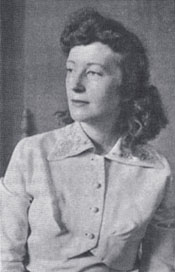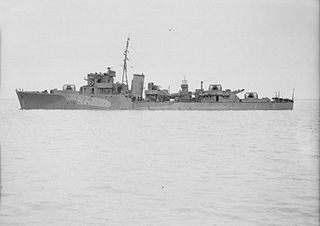
The Sea Organization or Sea Org is the senior-most status of staff within the Church of Scientology network of corporations, but is not itself incorporated. In the 1960s and 1970s, the Sea Org was started as L. Ron Hubbard's private navy, and adopted naval uniforms and ranks. Today, all Scientology management organizations are exclusively staffed with Sea Org members. The Sea Org maintains strict codes for its members, beginning with a symbolic billion-year pledge of service to Scientology upon initiation. David Miscavige, the leader of Scientology, is the highest-ranking Sea Org officer with the rank of captain. The rank of commodore is permanently reserved for the late L. Ron Hubbard, founder of Scientology. Some ex-members and scholars have described the Sea Org as a totalitarian organization marked by intensive surveillance and a lack of freedom.

HMS Orion was a Leander-class light cruiser which served with distinction in the Royal Navy during World War II. She received 13 battle honours, a record only exceeded by HMS Warspite and matched by two others.

Mary Sue Hubbard was the third wife of L. Ron Hubbard, from 1952 until his death in 1986. She was a leading figure in Scientology for much of her life. The Hubbards had four children: Diana, Quentin (1954–1976), Suzette, and Arthur.

HMS Queen Emma was a commando troop ship of the Royal Navy during the Second World War. Built as a civilian passenger liner in 1939 by De Schelde at Vlissingen, she was named the MS Koningin Emma, after Queen Emma of the Netherlands, and operated by Stoomvaart Maatschappij Zeeland (SMZ) between Flushing and Harwich, along with her sister ship, MS Prinses Beatrix. After fleeing to Britain after the German invasion in 1940, she was requisitioned by the British Ministry of War Transport, renamed HMS Queen Emma and converted to a troopship at Harland and Wolff's yard in Belfast. During the war her main role was transporting British Commandos, and she participated in the Lofoten Islands Raid and the Dieppe Raid. She had the advantage of a high speed that allowed hit and run operations. Later designated as a Landing Ship, Infantry (Medium) she took part in the landings in North Africa, Sicily and Normandy. She operated in the Indian Ocean, and in the Dutch East Indies after the end of the war. In 1946 Queen Emma was returned to her owners and continued to operate as ferry from the Hook of Holland until 1969, when she was scrapped in Antwerp, Belgium.

A landing ship, infantry (LSI) or infantry landing ship was one of a number of types of British Commonwealth vessels used to transport landing craft and troops engaged in amphibious warfare during the Second World War. LSIs were operated by the Royal Navy, British Merchant Navy, Royal Canadian Navy, Royal Indian Navy, and Royal Australian Navy. They transported British Commonwealth and other Allied troops in sea assaults and invasions throughout the war.

HMAS Westralia (F95/C61) was an auxiliary cruiser of the Royal Australian Navy (RAN). Built by Scottish shipbuilder Harland and Wolff and completed in 1929, Westralia was operated by the Huddart Parker company until 1939, when she was requisitioned for service with the RAN as an Armed Merchant Cruiser (AMC). Fitted with guns and commissioned in early 1940, Westralia was initially used to escort convoys in the Pacific and Indian oceans. In November 1940, the largest mutiny in RAN history occurred aboard the ship, with 104 men charged.

The military career of L. Ron Hubbard saw the future founder of Scientology serving in the United States Armed Forces as a member of the Marine Corps Reserve and, between 1941 and 1950, the Navy Reserve. He saw active service between 1941 and 1945, during World War II, as a naval lieutenant and later as a lieutenant. After the war he was mustered out of active service and resigned his commission in 1950.

HMS Kimberley was a K-class destroyer of the Royal Navy. She served in the Second World War and survived it, being one of only two of the K-class to do so. So far she has been the only ship of the Royal Navy to bear the name Kimberley, after the town of Kimberley, Northern Cape, site of the Siege of Kimberley in the Second Boer War. She was adopted by the civil community of Eastwood, Kimberley and Selston, Nottinghamshire in 1942 after a successful Warship Week campaign for National Savings.

HMS Arrow was an A-class destroyer of the Royal Navy, built by Vickers-Armstrongs at their Barrow-in-Furness between 1928 and 1930, being launched on 22 August 1929. Arrow served in the Mediterranean Fleet in the 1930s, rescuing refugees and taking part in neutrality patrols during the Spanish Civil War.

HMS Middleton was a Type II Hunt class destroyer of the Royal Navy and served in the Second World War. Her role was providing support for minelaying operations in the Atlantic and anti-aircraft protection for the North Russian convoys. At the end of the Second World War, Middleton returned to Portsmouth having achieved no less than six battle honours during her brief four years of active service. She remained in reserve until 1955 and was broken up in February 1958.

HMS Badsworth(pennant number L03) was an escort destroyer of the Type II Hunt class. The Royal Navy ordered Badsworth's construction three months after the outbreak of the Second World War. Cammell Laird laid down her keel at their Birkenhead yard on 15 May 1940, as Admiralty Job No. J3260. After a successful Warship Week national savings campaign in March 1942, Badsworth was adopted by the civil community of Batley, then in the West Riding of Yorkshire. The ship was named after a fox-hunt in Yorkshire.

HMS Blackmore(pennant number L43) was an escort destroyer of the Type II Hunt class. The Royal Navy ordered Blackmore's construction three months after the outbreak of the Second World War. A. Stephen & Sons laid down her keel at their Glasgow yard on 10 February 1941, as Admiralty Job Number J1479. The ship was adopted by the civil community of Langport, Somerset after a successful Warship Week campaign. The ship was sold to the Royal Danish Navy and renamed HDMS Esbern Snare.

HMS Princess Beatrix was a commando troop ship of the Royal Navy during the Second World War. Built as a civilian passenger liner in 1939, she was named the MS Prinses Beatrix, after Princess Beatrix of the Netherlands, and operated by Stoomvaart Maatschappij Zeeland (SMZ) between Flushing and Harwich, along with her sister ship, MS Koningin Emma. After fleeing to Britain after the German invasion in 1940, she was requisitioned by the British Ministry of War Transport, renamed HMS Princess Beatrix and converted to a troopship at Harland and Wolff's yard in Belfast. During the war her main role was transporting British Commandos, and she participated in the Lofoten Islands Raid and the Dieppe Raid. She had the advantage of a high speed that allowed hit and run operations. Later designated as a landing ship, infantry (medium) she took part in the landings in North Africa, Sicily, Salerno, Anzio, and southern France. In 1946 Princess Beatrix was returned to her owners and continued to operate as ferry from Hook of Holland until 1969, when she was scrapped in Antwerp, Belgium.
HMS Blencathra (L24) was a Hunt-class destroyer of the Royal Navy in commission from 1940 to 1948. She was a member of the first subgroup of the class, and saw service through most of World War II.

HMS Witch (D89) was a Modified W-class destroyer of the British Royal Navy that saw service in World War II.

HMS Venomous (ex-Venom), was a Modified W-class destroyer of the British Royal Navy that saw service in the Russian Civil War and World War II.

The fourth HMS Volunteer (D71), later I71, was a Modified W-class destroyer of the British Royal Navy that saw service in World War II.

The destroyer HNLMS Tjerk Hiddes was a British built, Dutch warship of World War II. She was laid down on 22 May 1940 as a British N-class destroyer and launched on 25 June 1941 as HMS Nonpareil, but on 27 May 1942, she was transferred to the Royal Dutch Navy. The ship was commissioned in 1942 as HNLMS Tjerk Hiddes, named after the 17th century Dutch admiral, Tjerk Hiddes de Vries. Much of her war service was with the Royal Navy and United States Navy in the Indian Ocean and Australia. Following the war, the destroyer was sold to Indonesia and renamed RI Gadjah Mada. She was scrapped in 1961.
RMS Andes was a 26,689 GRT steam turbine Royal Mail Ship, ocean liner, cruise ship, and the flagship of the Royal Mail Lines fleet. She was the second Royal Mail ship to be named after the South American Andes mountain range. The first RMS Andes was an A-class liner launched in 1913. In 1929 that RMS Andes was converted into a cruise ship and renamed Atlantis.

HMS Alisma was a Flower-class corvette that served in the Royal Navy.

















